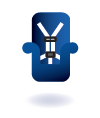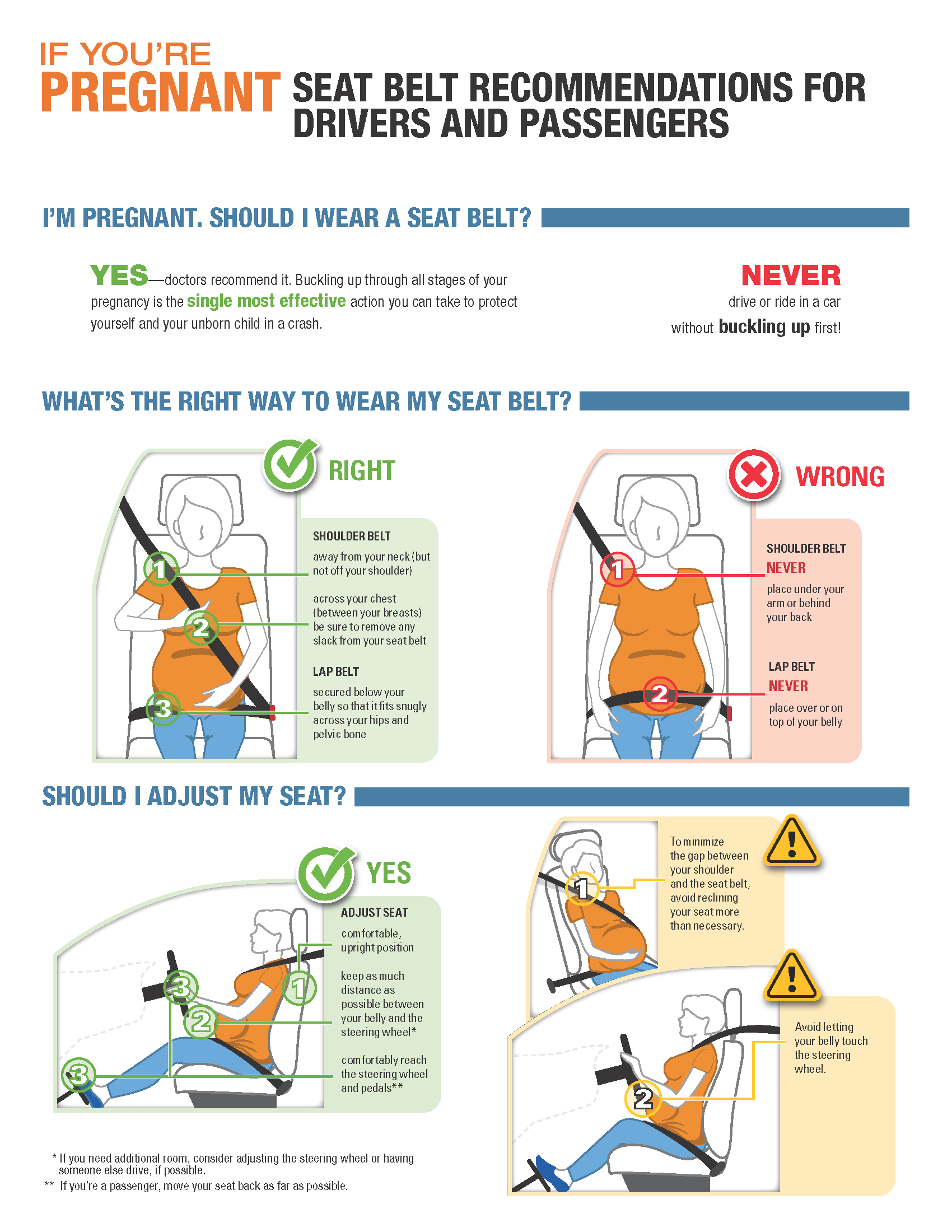Child Passenger Safety
PennDOT cares about protecting our children and encourages all adults to take the responsibility of keeping them safe when riding in a vehicle. It is our job to make sure they buckle up — from the time when children are too young to do it themselves to the time they climb behind the wheel for the first time.
The Numbers
-
Car crashes are a leading cause of death for children.*
-
40%: The percentage of children who died in 2021 while riding in a vehicle unrestrained.*
-
3: The average number of children (14 and younger) who were killed in traffic crashes each day in 2021.*
- 1,184: The number of children (14 and younger) who died in traffic crashes in 2021.*
- 33: The number of children who died in a vehicle from heatstroke in 2022.*
-
83%: The percentage of children under age 4 in Pennsylvania who sustained no injury during a crash where they were restrained in a car seat.**
*Source: National Highway Traffic Safety Administration
**Source: 2020 Pennsylvania Crash Facts and Statistics
The Process
Follow these steps to help you through the process of finding the right car seat, installing it correctly, and keeping your child safe.
Find the right car seat
-
Learn about the four car seat types
-
Follow car seat recommendations based on your child’s age and size
-
Find and compare car seats and ease-of-use ratings using
NHTSA’s Car Seat Finder
Install your car seat correctly
Keep your child safe in a car seat
The Law in Pennsylvania
Child passenger safety laws vary from state to state, so it’s important you are familiar with the laws here in Pennsylvania.
-
Birth-2 Years: Must be secured in a rear-facing car seat until the child outgrows the maximum weight and height limits designated by the car seat manufacturer.
-
Birth-4 Years: Must be properly restrained in an approved child safety seat anywhere in the vehicle.
-
4-8 Years: Must be restrained in an appropriate booster seat.
-
8 Years and Older: Must be in a seat belt.
Choosing the Right Car Seat
While the above is what’s required by Pennsylvania law, NHTSA provides further recommendations based on your child’s age and size.
-
Select a car seat based on your child's age and size, and choose a seat that fits in your vehicle and use it every time.
-
Always refer to your specific car seat manufacturer's instructions; read the vehicle owner’s manual on how to install the car seat using the seat belt or LATCH system; and check height and weight limits.
-
To maximize safety, keep your child in the car seat for as long as possible, as long as the child fits within the manufacturer's height and weight requirements.
-
Keep your child in the back seat at least through age 12.
Below depicts general recommendations from NHTSA for the best car seat at every age, but use the
car seat finder to find the best seat for your child.
Birth-2 Years
 By law, children under age 2 should always ride in a
rear-facing car seat. There are two types of rear-facing car seats:
By law, children under age 2 should always ride in a
rear-facing car seat. There are two types of rear-facing car seats:
-
Infant-only seats can only be used rear-facing.
-
Convertible and all-in-one car seats typically have higher height and weight limits for the rear-facing position, allowing you to keep your child rear-facing for a longer period of time.
2-4 Years
 Keep your child
rear-facing as long as possible. It’s the best way to keep them safe. Your child should remain in a rear-facing car seat until they reach the top height or weight limit allowed by your car seat’s manufacturer. Once your child outgrows the rear-facing car seat, your child is ready to travel in a forward-facing car seat with a harness and tether.
Keep your child
rear-facing as long as possible. It’s the best way to keep them safe. Your child should remain in a rear-facing car seat until they reach the top height or weight limit allowed by your car seat’s manufacturer. Once your child outgrows the rear-facing car seat, your child is ready to travel in a forward-facing car seat with a harness and tether.
4-7 Years
 Keep your child in a
forward-facing car seat with a harness until they reach the top height or weight limit allowed by your car seat's manufacturer. Once your child outgrows the forward-facing car seat with a harness, it's time to travel in a booster seat, but still in the back seat.
Keep your child in a
forward-facing car seat with a harness until they reach the top height or weight limit allowed by your car seat's manufacturer. Once your child outgrows the forward-facing car seat with a harness, it's time to travel in a booster seat, but still in the back seat.
8-12 Years
 Keep your child in a
booster seat until they are big enough to fit in a seat belt properly. For a seat belt to fit properly, the lap belt must lie snugly across the upper thighs, not the stomach. The shoulder belt should lie snugly across the shoulder and chest and not cross the neck or face. Remember: your child should still ride in the back seat because it’s safer there.
Keep your child in a
booster seat until they are big enough to fit in a seat belt properly. For a seat belt to fit properly, the lap belt must lie snugly across the upper thighs, not the stomach. The shoulder belt should lie snugly across the shoulder and chest and not cross the neck or face. Remember: your child should still ride in the back seat because it’s safer there.
Find and Compare Seats
The
Car Seat Finder is an easy-to-use tool offered by NHTSA that lets you compare seats and ease-of-use ratings to find the right car seat for your child. Just fill out your child’s age, height and weight, and you’ll be provided car seat types that fit your child.
Installing Your Car Seat
The first step to correctly installing your car seat is to read both the car seat instruction manual and the vehicle manual.
PennDOT provides funding for more than 75 fitting stations where trained technicians will check that the child safety seat is properly installed. To find a fitting station near you, search the
TIPP fitting station directory or
NHTSA’s car seat inspection search. Use your city and state to find a certified child passenger safety technician through the
Safe Kids Website.
While we recommend taking your seat and vehicle to a fitting station to ensure proper installation, you may also be confident in your seat installation by using
NHTSA’s comprehensive car seat installation guides and videos.
Remember, it is estimated that
46% of car seats on America’s roads are installed incorrectly, according to NHTSA. A car seat that is incorrectly installed will not provide optimal protection in a crash situation, and may put your child’s safety at risk.
Register Your Car Seat
Congratulations — you chose the right car seat and installed it correctly. Now it’s time to
register your car seat with the manufacturer to receive recalls and safety notices so your child can remain safe. Also, you can sign up with NHTSA to receive email alerts about car seat and booster seat recalls.
Child Safety Seat Loan Programs
In many counties across the state, loan programs provide child safety seats to families in need to help them follow the law and keep children safe when riding in vehicles. Loan programs may carry a variety of seats, including infant seats, convertible seats, combination seats and booster seats. To find a loan program near you, search the
car seat loan directory.
Transportation for Children with Special Needs
The
Traffic Injury Prevention Project, sponsored by PennDOT, provides school districts, school bus contractors, hospitals, pediatricians, parents, and other health care providers with the most current information about the atypical transportation needs of children with special health care needs, teen parents, special education students, and the preschool population. Information is available for passenger vehicles, school buses/vehicles, as well as wheelchairs and child passenger safety restraints.
Seat Belt Safety Tips During Pregnancy
 Click to view larger. (PDF)
Click to view larger. (PDF)
-
Wear your seat belt. Buckling up is the single most effective action to take to protect you and your unborn child in a crash. Never drive or ride in a car without buckling up.
-
Place the shoulder belt across your chest and away from your neck.
-
Do not place the shoulder belt under your arm or behind your back.
-
Secure the lap belt BELOW your belly, snugly across your hips and pelvic bone.
-
NEVER place the lap belt over or on top of the belly.
-
Adjust the vehicle seat. Keep as much distance as possible between the belly and the steering wheel.
-
When driving, if you need additional room, consider adjusting the steering wheel or having someone else drive, if possible.
-
As a passenger, move your seat back as far as possible.
-
Keep airbags activated. Seat belts and air bags work together to provide the best protection for you and your unborn child.
If you are involved in a crash, seek medical attention, even if you think you are not injured, regardless if you were the driver or passenger.